One Point Mind
|
The Spring Azure Butterfly & Speedwell blossom is the latest embroidery I completed. It is available and can be purchased from my Ko-fi shop. About the embroidery. When I was a kid, I loved following these tiny butterflies as they skipped along, close to the ground. Spring Azures is one of the earliest butterflies to come out in the spring. I chose this patterned fabric, as it reminded me of the grasses that the butterflies would skip across. I added the speedwell blossoms, as they are such cute little flowers that grow low to the ground and dot the grass with their pretty periwinkle petals.
Spring Azure Butterfly & Speedwell blossoms, hand embroidery: $400.00
0 Comments
Come see my embroidery work and meet the other talented graduates of MVCC's ThINCubator Artist Refinery mentorship program.
July 12, 2023 5:30 - 7:30 pm 326 Broad St, Utica, NY (Parking lot is in the back of the building) FREE Register here to attend. In May, I was accepted into an eight-week mentoring program to help me establish a sustainable income from teaching and my creative work. My hope for participating in the program was to get some technical help, and my goal was to create some online content, particularly videos, because I have been struggling for some time to get this part of my work launched.
As I enter the last week of the program... 2023 Mystery Counted Cross-Stitch Sampler
Stitch-A-Long (SAL): "Over The Moon" Who doesn't love a mystery? Each month receive a new part of a large sampler counted-cross stitch design. Free to participate in! (includes pattern chart) The 2023 Mystery SAL begins January 2023 --new pieces of the pattern will be released monthly through December 2023. To participate please visit: https://www.onepointmind.com/2023mysterysal.html As I received the news of the unprecedented and brutal attack on Ukraine, I struggled with what to do with my feelings of unease and horror at what the Ukrainian people are facing. Today I woke up and thought perhaps I could engage in a contemplative activity in which I could focus prayers and positive energies directed to all those who are and will be suffering gravely. So I spent the day today designing a cross-stitch pattern that I could practice contemplative stitching on. I then thought I should share this by making it a kind of solidarity stitch-a-long and encouraging others to join me on this special stitch-a-long in honor of the Ukrainian people. Why a cross-stitch design? The Ukrainian people have had a long, proud tradition of embroidery, and this small piece is inspired by traditional Ukrainian embroidery designs. Based on Ukrainian tradition the symbols in this piece mean: The cross = protection from evil. The star = strength and serves as a protection from disease and evil. The heart = love and harmony, and a united family. The white dove (flying over heart) = peace. The wavy lines = the stream of time and evolution. The key/sigil = protection from negative influences. The square = well-being, peace, and fortune. It also means perfection, harmony, and order. In the Ukrainian tradition, the square is the symbol of earth. The colors also have meaning in the Ukrainian tradition: Yellow = wellbeing, joy, and vital energy. Blue = healing and spiritual calm, and it protects those who are most vulnerable. Red = life energy, love, and joy. Black = the earth, wealth, and wellbeing. White = innocence and purity. Green = youth, beauty, and calm. I have matched the yellow and blue threads to the official colors of the Ukrainian flag (see the thread color conversion chart below) by converting the official RGB colors to DMC thread colors. How to practice this Solidarity SAL: This is a project that is meant to take slowly and with a particular focus. Here is how I practice this solidarity stitching: With each stitch, offer a prayer of strength and support, while reflecting on the challenges facing the Ukrainian people. Pause periodically, breathe and envision a world at peace and in harmony. Then continue infusing each stitch with strength and support. When I stitch with black thread, I connect to the stability of the earth. With each stitch in red, I connect to life energy, love, and joy. With each stitch in yellow, I connect with wellbeing and vital energy. As I stitch the cross I focus on protecting the Ukrainian people from harm. And as I move on to stitch the star, I focus on protecting the Ukrainian people from negativity and evil. This focused stitching takes a bit of energy, so I devote a short amount of time each day to it--but it also raises energy that I release into the world and in turn, send to all Ukrainian people all over the world. Please share this pattern and encourage others to join in this special solidarity stitch-a-long. May we, together, through our creative forces, wake people up to the horrors that Ukrainian people face and to the truth of how fragile democracy among people can be. Through stitching may we all become stronger and closer together! (Note: I ask that you not use the pattern for personal gain. If you sell anything made from the pattern, please donate the money to support the Ukrainian people.) You are welcome to join the One Point Mind Mystery SAL Facebook Group and share your process working on the Ukraine Solidarity SAL: www.facebook.com/groups/opmmysterysal/ May our creative energies guide the world to peace and harmony!
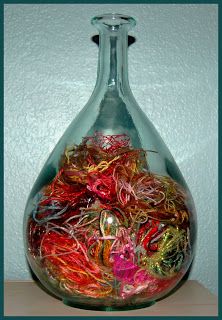 When you dive into the world of fiber-related crafts, undoubtably, you will eventually come across some rather unique and downright bizarre habits and fascinations. There are too many to go over here, but I will share one of my more recent discoveries: the ORT Jar. You many have even seen pictures of glass containers filled with colorful bits of thread and yarn. These jars of random thread are called ORT jars. There isn’t a consensus regarding the origins of the name. Some say it is derived from the 15th-century German word for “leftover”, referring to the scraps of food that remained after a meal. Other sources say the name is an acronym for “Odd Random Threads”, “Old Ratty Threads”, or “Odd Remnants and Threads”, etc. Another inspiration for the ORT jar might be witch bottles used in 17th-century England and America. Witch bottles were used to protect an individual or a home from evil magic, and curses. They were often filled with a variety of small objects, including hair and thread as part of the ingredients needed to work their magic. Whatever the origin, ORT jars have become a fun part of cross-stitching, and other fiber-arts. Typically the ORT jar is made of clear glass so that the colorful snips, tails, and remnants of threads can be seen. But why keep ORT jars at all? The reasons are as varied as the possible origins of the jars themselves. For some ORT jars are practical, as a way to keep your workspace neat and clean. You may have already experienced the special ability of embroidery floss to travel throughout your home by finding thread stuck to your clothes, socks, pants, carpets, pet’s noses, and fur, just about anywhere! Having a place to put the pieces of threads as you work can save yourself from extra house cleaning. Additionally, those of a more practical nature can use the contents of the ORT jar as stuffing for other projects, like pin cushions, to mend clothing or a finished cross-stitch project, other craft projects, and many other things. Another common reason to keep an ORT jar is more psychological in nature. That is in the encouragement and self-confidence the jars instill. As you see the jars fill, you are reminded of how much work has gone into your project or projects. Some cross-stitch projects can take months or even years to complete, so it can be very encouraging to watch the ORT jar fill up over time. Other crafters use ORT jars as decor to bring color and playfulness to a craft room or other rooms in the home. Clear glass or plastic Christmas ornaments can be filled with the contents of an ORT jar for a unique holiday decoration or gift. Imagine what a conversation piece a lamp with a clear glass fillable base full of colorful snips of thread would be! One thing that the contents of the ORT jar should never be used for is birds’ nests. The threads can be dangerous for birds, as they can get wrapped around their legs or necks cutting off circulation and causing serious injury and even death. Most crafters use a clear glass jar, such as a mason jar, or a food jar, that has been cleaned and dried, with a lid. Glass isn't required, clear plastic containers with a cover can also be used. Any container can be used: a ceramic jar, a metal or wooden box, even a plastic ziplock bag, it doesn’t matter really. However, clear material is preferable if you want to see the various colors of the threads as they fill the container. It's by no means required to keep an ORT jar, but being one of the many unique, and sometimes bizarre fiber-based habits, you may enjoy having one (or several) and joining in on the fun! If you decide to keep an ORT jar, share a picture of it on our Facebook group page! 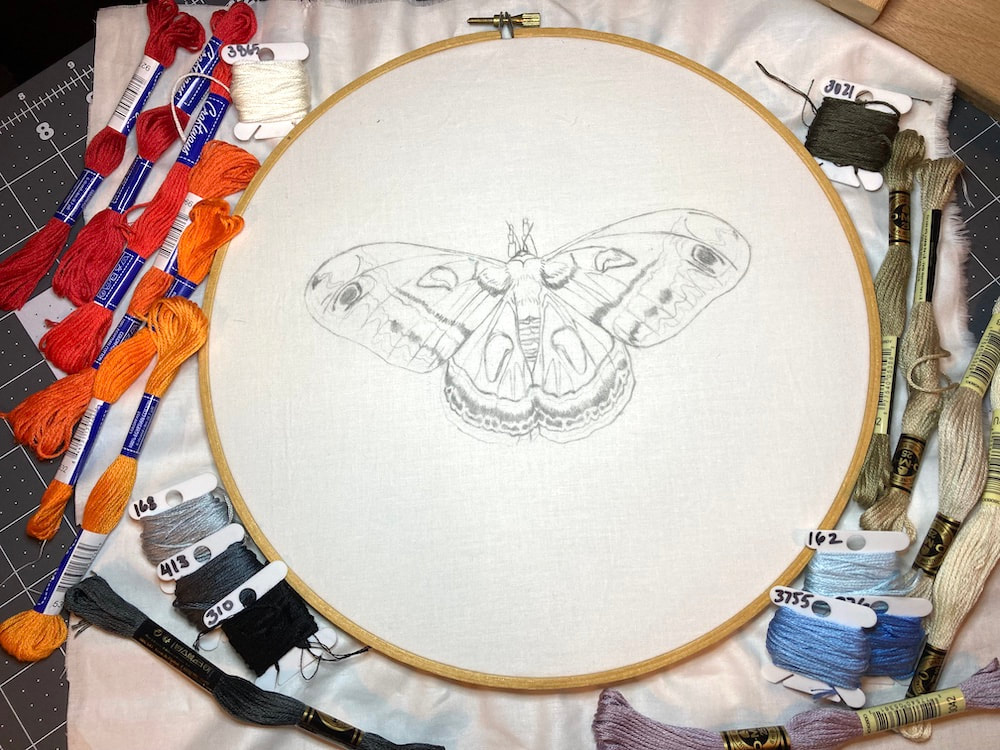 I decided that my next thread painting would be of a cecropia moth. So I have transferred a life-sized drawing of a female cecropia moth onto fabric and selected the color palette of threads. I chose this striking moth in honor of my unforgettable childhood experience of raising cecropia moths from egg to full-grown moth. When I was about 12-13 years old my father came home from his overnight shift at the airport hanger with a cecropia moth--a huge, exquisitely beautiful creature with a wingspan of about 6 inches. I brought it into my room and watched it fly around and deposit hundreds of tiny pinkish-yellow eggs in various locations throughout my room. I collected the eggs and put them into an aquarium. The mother moth died a few hours after laying the eggs. I spent that summer raising dozens of caterpillars that hatched from the eggs. They started out as tiny black and fuzzy but rapidly outgrew the aquarium and my ability to feed them fast enough. Within a month of hatching, I had to move the caterpillars outside to lilacs and maple trees around my house. I continued to keep track of them and watch them grow into enormous fat brilliant green caterpillars nearly five inches long decorated with colorful spikes. At the end of the summer, they spun silky grey cocoons and remained attached to the tree branches through the winter. I was blessed the following spring by witnessing several of the cocoons split open to reveal marvelous, beautiful, huge cecropia moths! It was an experience from my childhood that I will never forget, and to this day cherish deeply. I am really looking forward to creating this thread painting! To continue watching this piece as it develops you can become a monthly supporter through my patron site: ko-fi.com/onepointmind From there I will share each days progress as well as share process and background information along the way. Thank you for your support! Join OnePointMind's 2022 Mystery Sampler Counted Cross Stitch-A-Long! The project's theme is "B-utiful" Sign Up for the 2022 SAL is now Closed Make something! Learn how to practice crafting meditation while creating a beautiful piece to
Relax. Get Healthy! Studies* have shown that a regular practice of crafting improves overall health and enhances well-being through:
Sign up and each month you will get:
Just in time for the upcoming holidays, I have designed a greeting card from an image of a hand embroidery of a snowflake that I stitched. Order early so you get them to send them out for the holidays!
Just click on the image below to order (50% off with code SHOPZAZGIFTZ): Back in 2009, I was experimenting with loosening up my watercolor techniques. I enjoyed painting with lots of detail using ink and watercolor, but after many years of painting that way, I struggled with letting watercolor do what it did best: be spontaneous.
I recalled learning some Asian brush techniques that utilized both ink and watercolor that utilized the spontaneous nature of the medium. The painting here is not true Asian spontaneous painting, it is actually a combination of the detail styled work I used to do and the spontaneous techniques. I suppose this could be considered a bridge piece, as I began to stretch and develop my painting skills. On an earilier, now defunct blog I posted my process, which I have shared below. Prints of this painting can be ordered from my print-on-demand site: https://doan-art.pixels.com/featured/hawaiian-butterflyfish-antony-galbraith.html |
About My WorkMy primary medium is hand embroidery, but I do occasionally work with yarn, pencil, pen, and paint. I also offer commissioned hand-embroidered pet portraits. Archives
July 2023
Categories |
||||||||||||
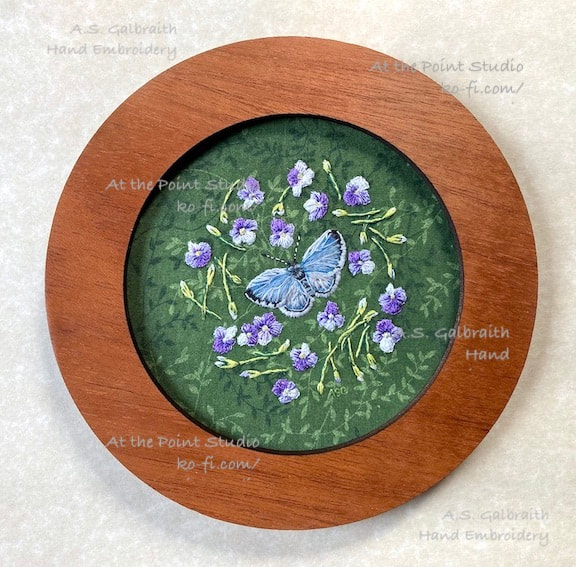

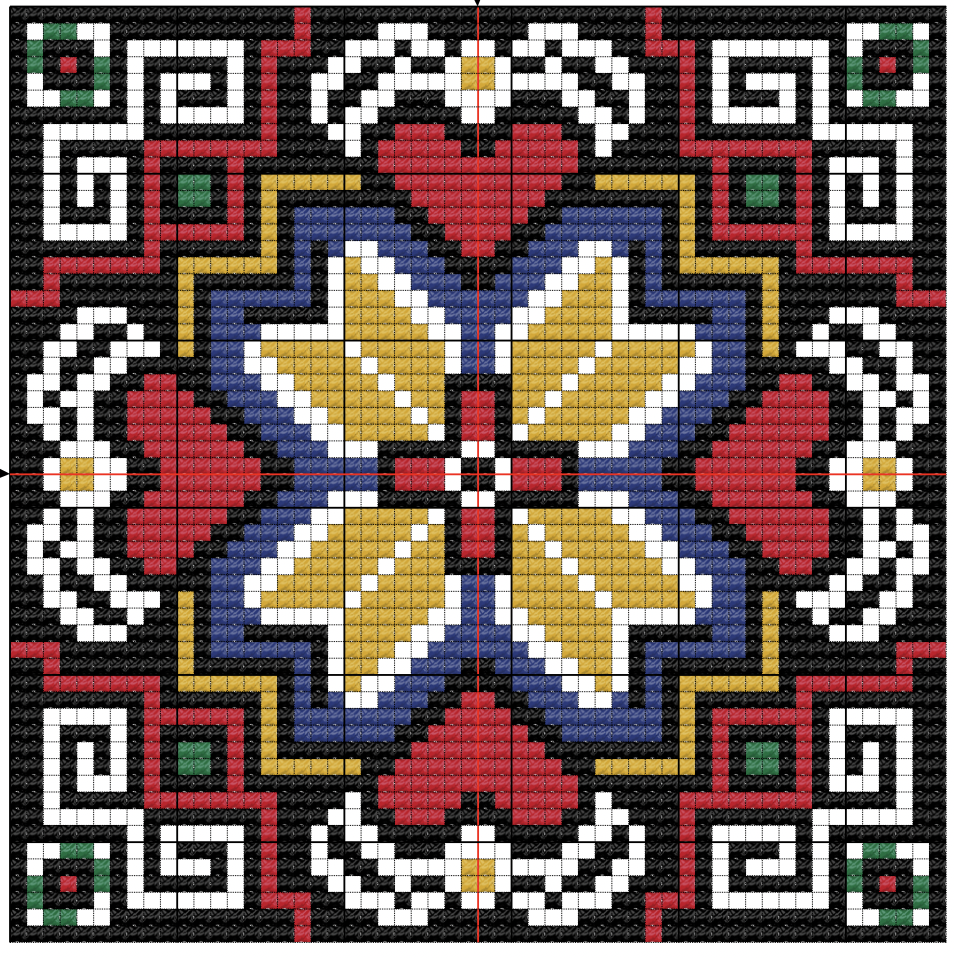


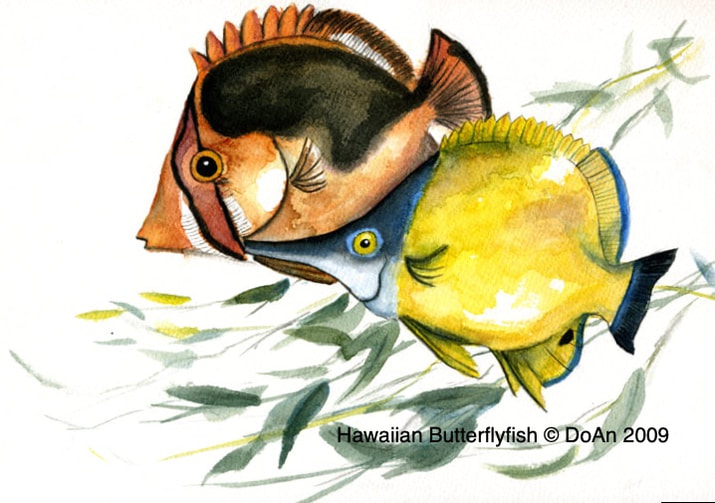
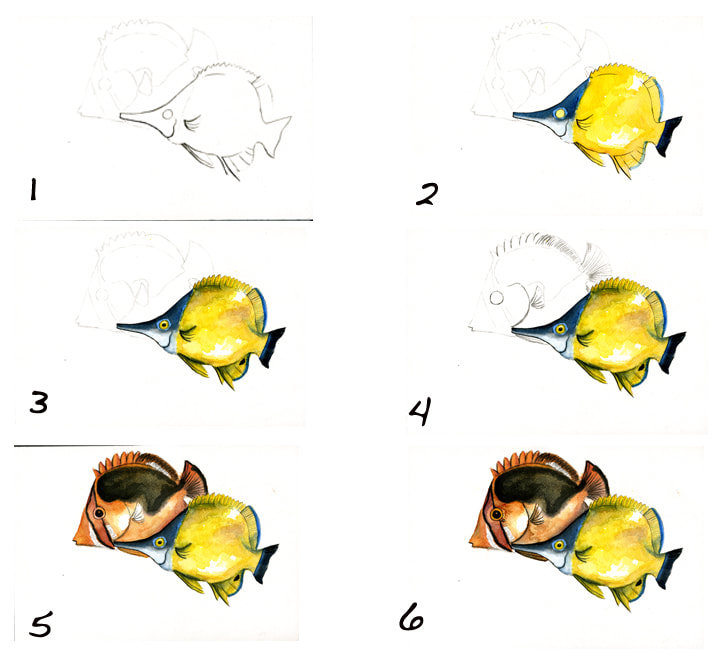
 RSS Feed
RSS Feed